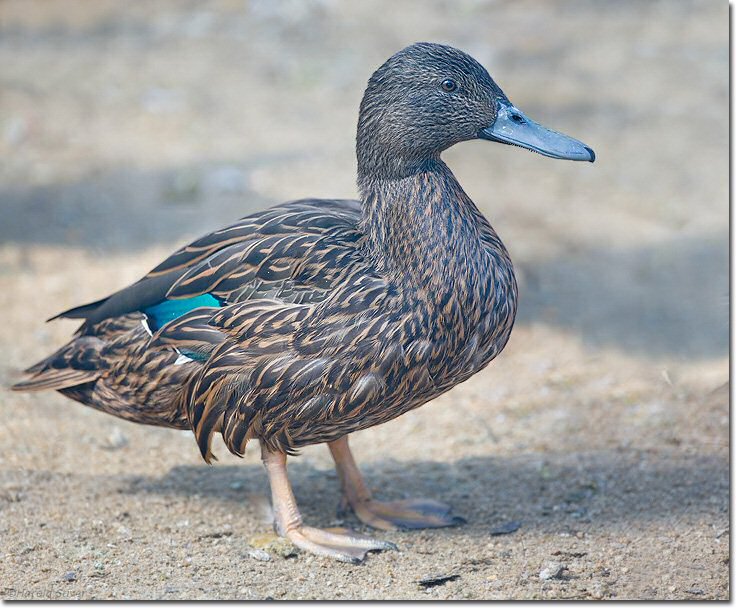
Meller's duck(Anas melleri)
Phylum —chordata
Class — aves
Order — anseriformes
Family — anatidae
Genus –anas
Appearance
The Meller's duck resembles a large female mallard. At 55–65 centimeters (22–26 in), it averages slightly larger than a mallard and is at the top size for the genus Anas.The speculum feathers are green as in some of its relatives, but unlike in these, it is bordered white as in the mallard. Its body is dark brown with narrow paler fringes to feathers on upper parts and wider fringes on lower parts. Its bill is pale grey, with dark patches at the base, and is larger than normal. Its feet and legs are orange.
Length: 55-65 cm. Weight: males: 883-1240 g, females: 831-1140 g
Habitat
It is endemic to eastern Madagascar.
Behavior
It is more active during the day, but is has also nocturnal habits.
The Meller’s duck may form mixed-species foraging flocks of up to 160 individuals and at roosts during the day.
The Meller’s duck is very territorial when breeding, and the territory is strongly defended and especially after the laying.
The Meller’s duck is sedentary, but some post breeding dispersions are reported. The species does not wander outside Madagascar.
They are good fliers. The flight is powerful with steady wingbeats.
Diet
The diet includes seeds of aquatic plants, as well as invertebrates, in particular mollusks.
Reproduction
The breeding season occurs mainly during the wet season between November and February, but nesting is also reported between July and April, involving more extended season.
The Meller’s ducks are monogamous. The mates remain together during the incubation, and may mate again in consecutive breeding seasons. The Meller’s duck breeds in single pairs or loose groups. The nest is near or on the ground and close to water, usually among vegetation such as clump of grass. The female collects the materials such as dry grass and leaves near the nest-site. The cup is lined with down towards the end of the laying.
The chicks resemble mallard’s chicks. They reach the full size at 77-84 days old, and fledge at 11 weeks. The female accompanies the precocial chicks to the feeding areas. They are sexually mature at one year old.
In captivity
In captivity, Meller's ducks have a lifespan of 10 to 15 years.
In summer, Meller's ducksare kept in outdoor enclosures. The minimum size of the enclosure is 3 square meters.
In winter, they should be transferred to an insulated enclosure with a temperature of at least +15 °C. It is desirable to equip the enclosure with additives in the form of branches and perches. In the winter room, you must install a pool with running or frequently replaced water.
As a winter bedding for waterfowl, you can use soft hay, which is laid out in places where birds rest.
The diet includes grain feed-corn, wheat, barley, millet, oatmeal, wheat bran, grass, meat and fish meal, chalk, small shell, gammarus. In the warm season, it is good to give various greens - cut dandelion leaves, lettuce, plantain, duckweed. Good food for ducks - wet mixture of grated carrots, bran, various cereals. During the reproductive period and during molting, they are mixed with wet food or given separately: fish and minced meat.
Meller's ducksare friendly to other birds, so they can be kept on the same pond with other ducks.
Artificial shelters for nests are installed in the paddock. Ducks independently incubate, breed and raise ducklings.
 Russian
Russian
 English
English
























